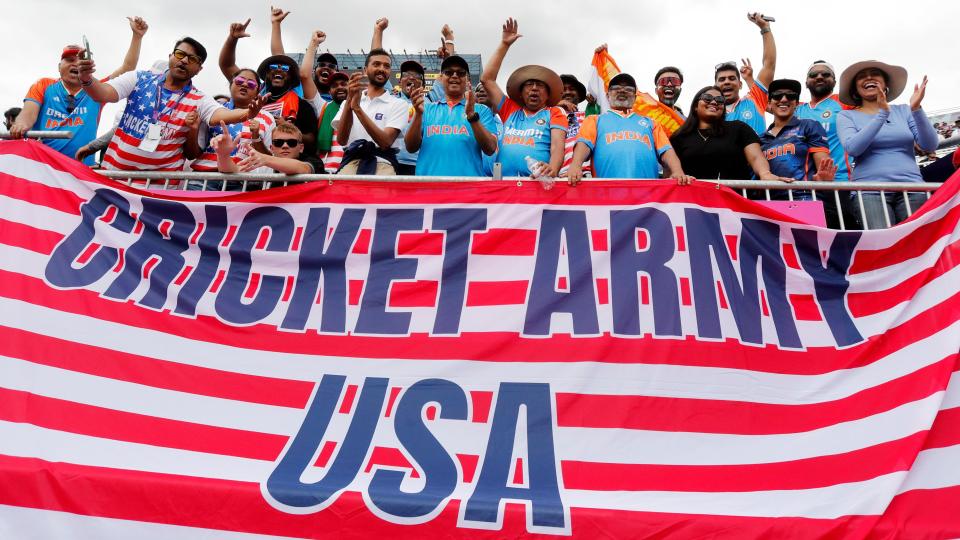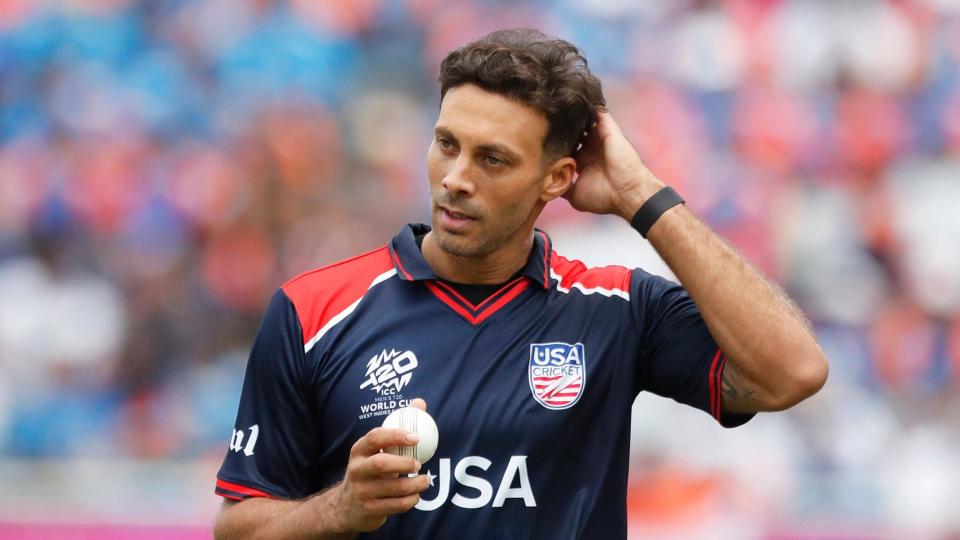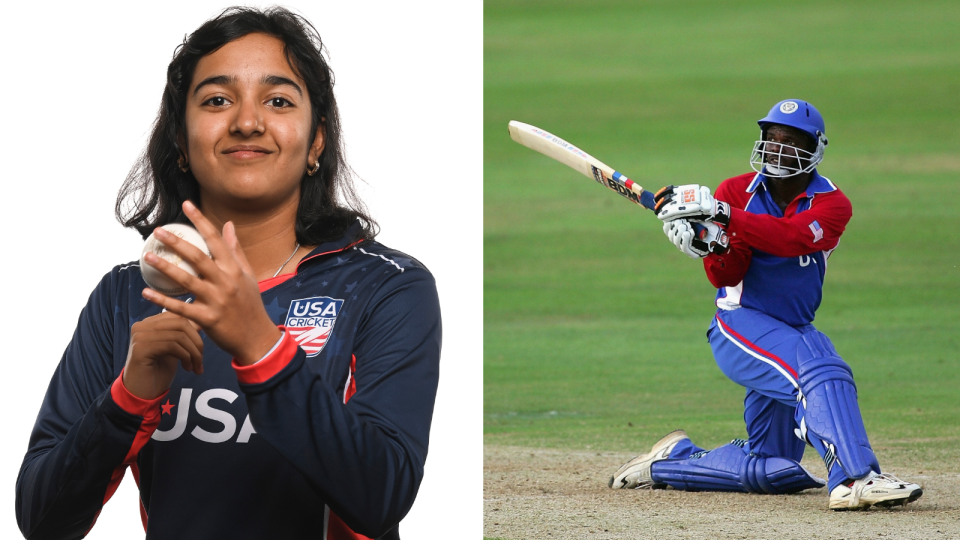Is American dream creating cricket’s new promised land?

In a country where bats are normally reserved for baseball, the United States has not traditionally been seen as a hotbed of cricketing talent.
But following India’s victory at the T20 World Cup – in the sport’s first major international tournament played in the USA – that perception appears to be changing.
The land of the free has now also been described as a “land of opportunity” by one South Africa-born professional making a new life for himself and his family.
BBC Sport Africa hears from three USA internationals with roots stretching around the globe who have been bowled over by what cricket’s new world offers on and off the pitch.
'The standard has improved drastically’ – Shadley van Schalkwyk (South Africa)
Shadley van Schalkwyk moved to the USA four years ago and works full-time as a player and coach in Seattle.
“I think everyone that gets here is very surprised at how much cricket happens,” he tells BBC Sport Africa, explaining that his new home has over 200 club sides.
The 35-year-old from Cape Town admits he found the move tough initially, especially as the coronavirus pandemic saw him “stuck” on his own for eight months.
“I still experience homesickness with regards to domestic family and friends,” he says.
“The difficult part about it is that you have to start everything from scratch again.
“But the people around me, the community around me, the friends I’ve built starting a new life here, they've just accepted me wholeheartedly.”

With a daughter born on US soil, Van Schalkwyk says he has no plans to return to Africa – which is probably just as well given the all-rounder now represents the USA, making his debut in April and playing four of his new nation’s seven T20 World Cup matches, helping them surprise pundits by reaching the second phase of the tournament.
He puts this success down to a “massive influx” of overseas professionals like himself.
“With it, the system and the grassroots system has improved,” he added.
“The standard has improved drastically in four years.”
He also says that “a lot of major indoor facilities” help because cricket is played all year round.
While not ready to retire just yet, he is already thinking ahead – and hoping to tap into new contacts to help pay his rent and grocery bills, which he admits are higher in the Seattle.
“In South Africa, I felt once I was done with cricket, there wasn't much of a pathway for me,” he explained
“In the USA, if you want to go outside cricket and start something, there is definitely opportunity.
“It’s nice to have conversations around business, around entrepreneurship.”
With Van Schalkwyk believing his new home offers better opportunities than South Africa, a country recently revealed to have the highest unemployment rate in the world, it is perhaps unsurprising that fellow cricketers regularly get in touch about making the move themselves.
His message to them is simple.
“Coming to the USA I had to sell every single thing that I had in South Africa. If you are not willing to commit to it 100% it won't work out.”
What impact has the T20 World Cup had on cricket in the USA?
'The sky is the limit' - where does USA cricket go after T20 World Cup?
Women’s cricket ‘experiencing rapid growth’ – Sai Tanmayi Eyyunni (India)
Sai Tanmayi Eyyunni may only be at the very start of her cricketing career but the 16-year-old is already a full international.
Unlike Van Schalkwyk, she was born in the USA after her parents moved from India to Texas 20 years ago for work.
“I was highly influenced by my grandfather, my father and my uncle,” she says, explaining how her early experiences of the game also came alongside male counterparts.
“It was hard for me, specifically where I live, to find girls that I could train with, so I would usually just join an academy with the boys.”
The leg spinner also cites a man, Australian legend Shane Warne, as her role model.
But the teenager believes the women’s game is changing quickly thanks to a structured development pathway that identified her potential in nationwide trials in 2020.
“Women's cricket in the US is experiencing rapid growth,” says Eyyunni.
“We are having a lot more girls in the same locality where we were able to train together as a girls team now.”
That is welcome news for someone hoping to pursue cricket as a career by joining the new global women’s T20 leagues.
Sai’s father, Srinivas, describes the United States as a “land of immigrants”, although he says some “quasi-racial” undertones remain.
He believes the move to the United States means his family has been “in the right spot at the right time”, explaining how increased competition in India might have limited his daughter’s opportunities.
He also says there is now a push from those promoting US cricket to obtain scholarships and bursaries for its young stars to attend university - something Sai would be keen on.
“I'm putting in a lot of effort in terms of just doing well overall in my education,” she reveals.
With a strong South Asian flavour to the USA women’s team, she is not alone in balancing cricket and study.
“We're all students, either high school or college.”
“We would play our matches in the morning or the afternoon, come back and start working in the evening. We're willing to do anything to play for the country.”
From ‘weekend cricket’ to ‘bright future’ – Clayton Lambert (West Indies)

Education was also key to Clayton Lambert’s decision to swap Guyana for the USA.
“The major reason for me moving was my son's education,” says the 62-year-old, who made his first international debut with the West Indies in 1991, playing five Tests and 10 one-day matches.
“His education took precedence over everything. I have absolutely no regrets. I think that when we become parents we sacrifice the rest of our enjoyment.”
Lambert thought his playing days were over when he made the move in 1999, but he ended up representing the USA instead.
“When I got here, it was mainly weekend cricket. Most of the players had other jobs,” he says.
“I thought that I still had a little bit in me. I was encouraged to be around the USA team and subsequently I played for the US.
“I thought I was helpful in the development at that time.”
That second international debut came in 2004, with Lambert aged 42, and he subsequently went on the coach the national team.
“I was comfortable playing that role trying to help with the development,” he explains.
“Today, we have a lot of professionals because players that thought they probably don't want to chase the dream anymore of representing the full nation countries – whether it be South Africa, India, Pakistan – migrated to the US.”
Lambert believes the game in his new home is now far more professional, with a vast increase in the number of full-time coaches, including his own role at the Atlanta Cricket Academy.
With more investment and exposure, he believes the future is bright for homegrown US cricketers.
“We start with kids from about five years old. We've got 10-year-olds that are making double centuries already. It's a joy to watch.”

 Yahoo Sports
Yahoo Sports 
